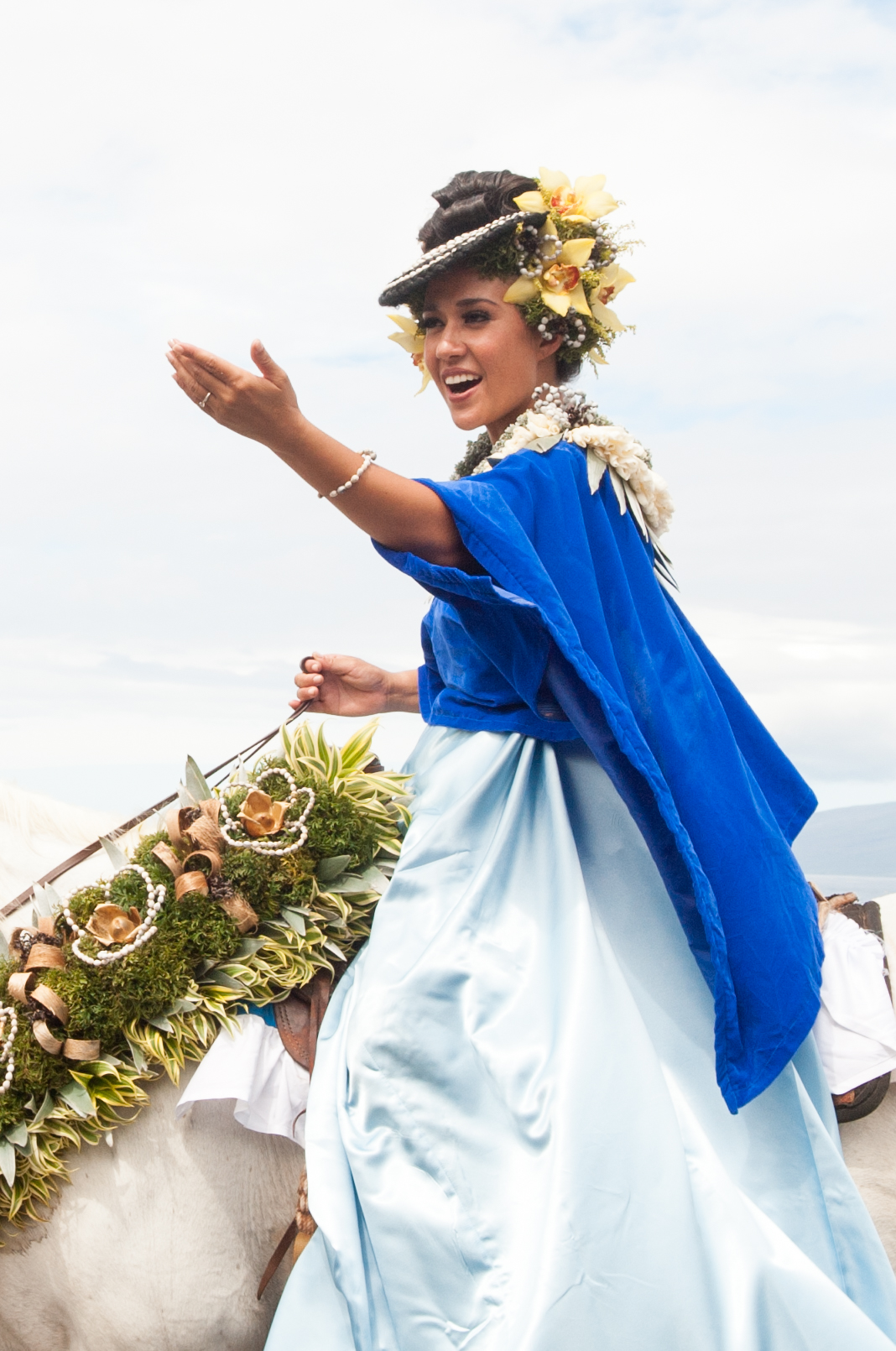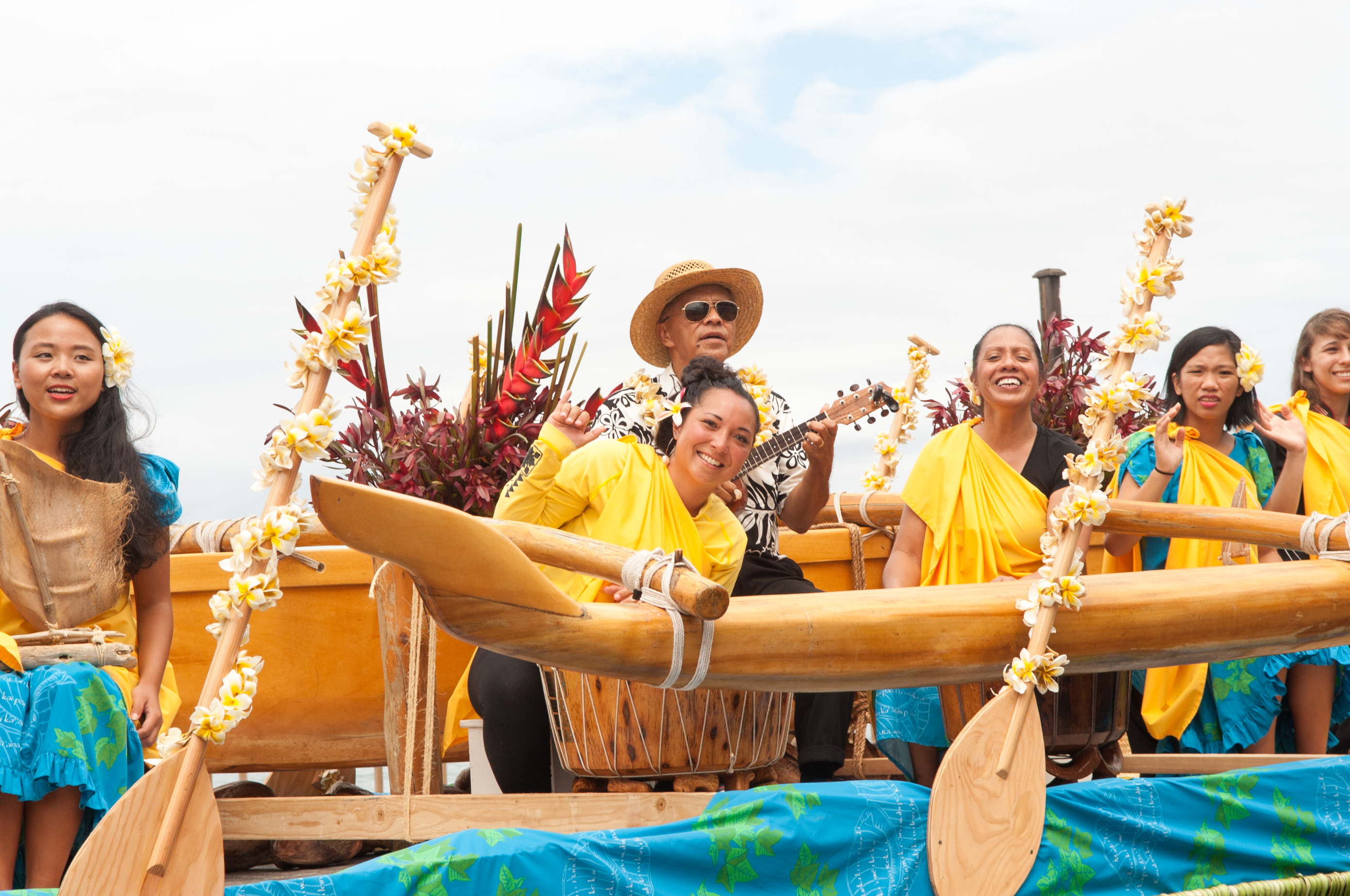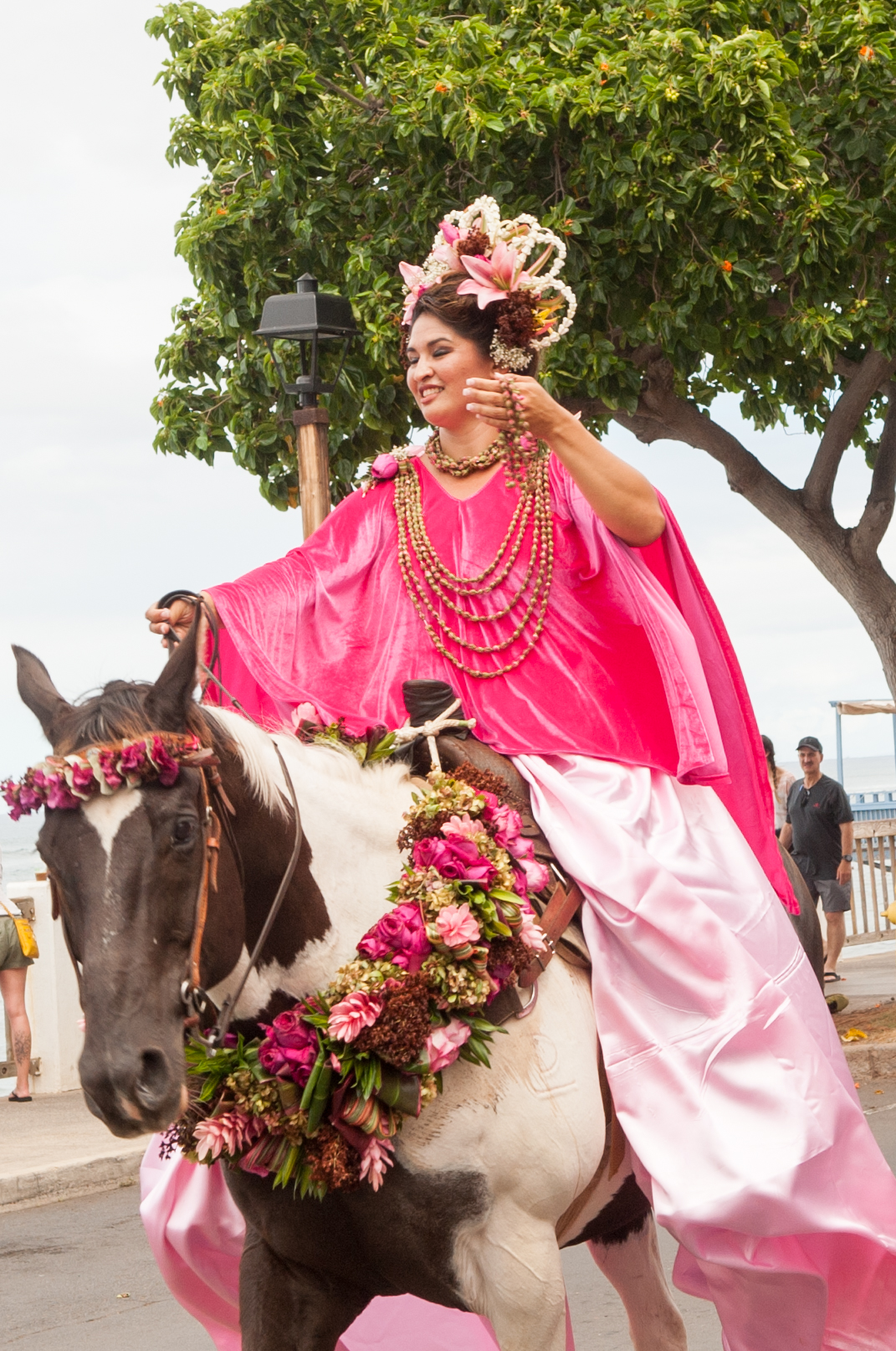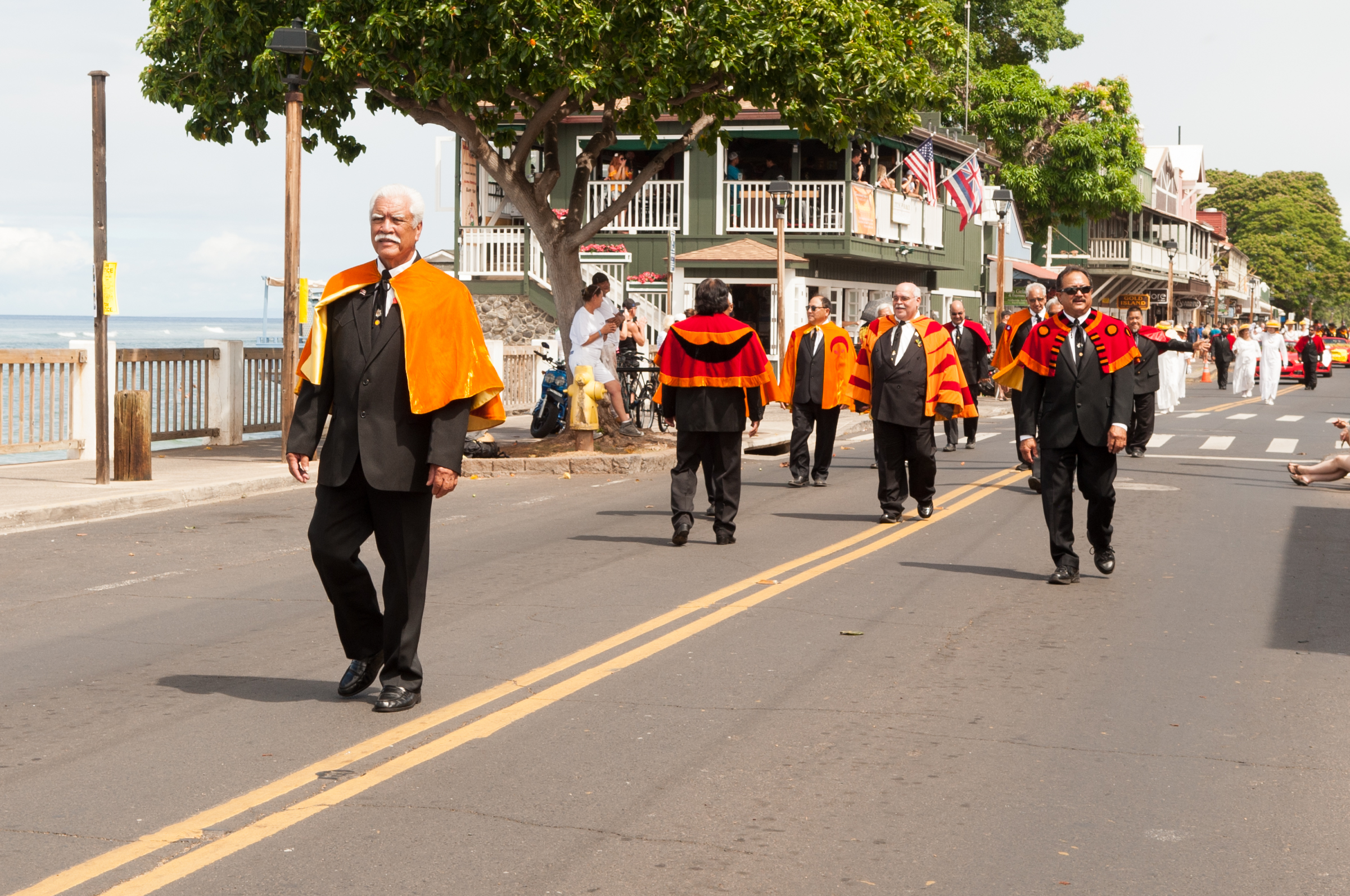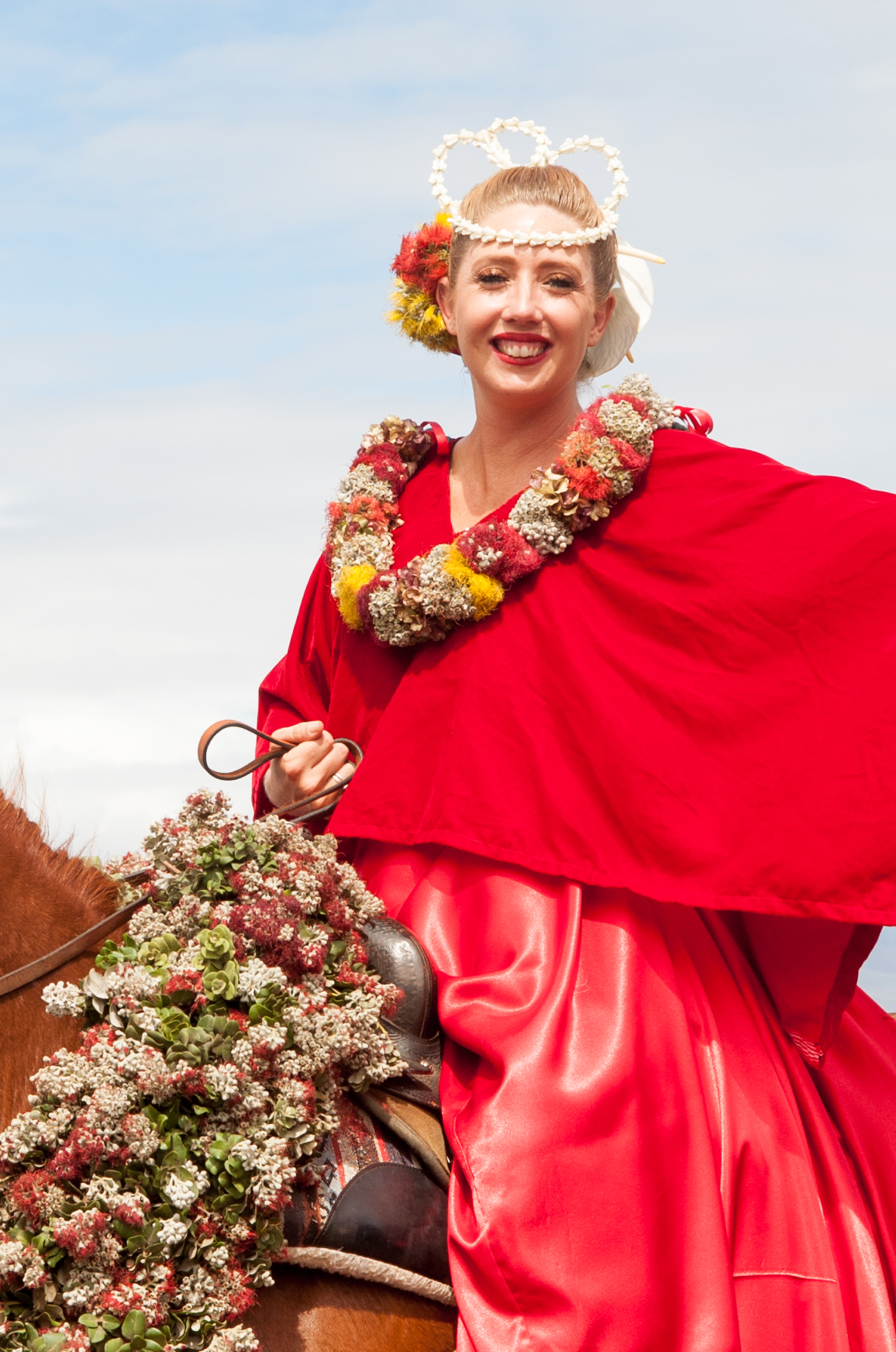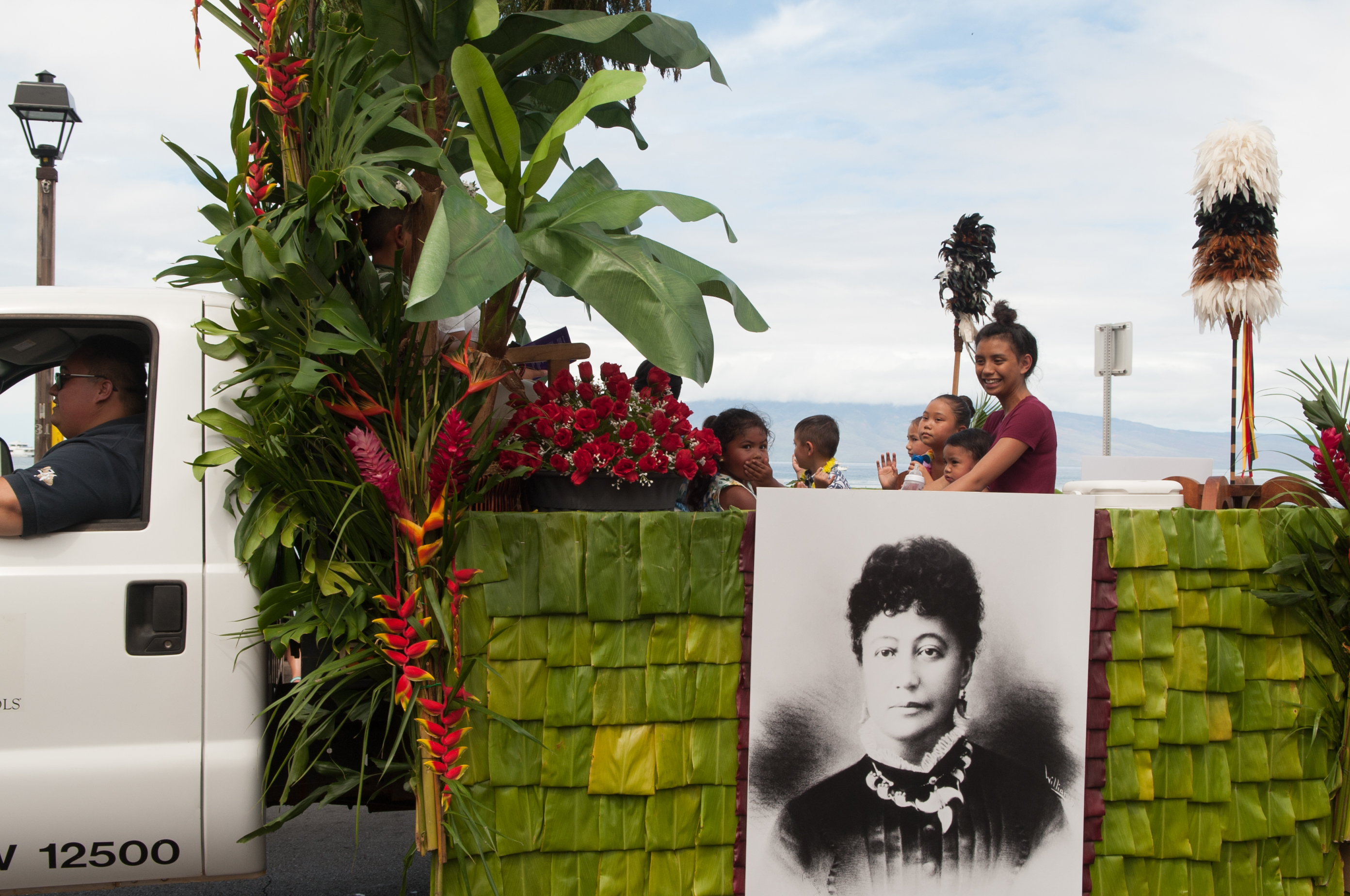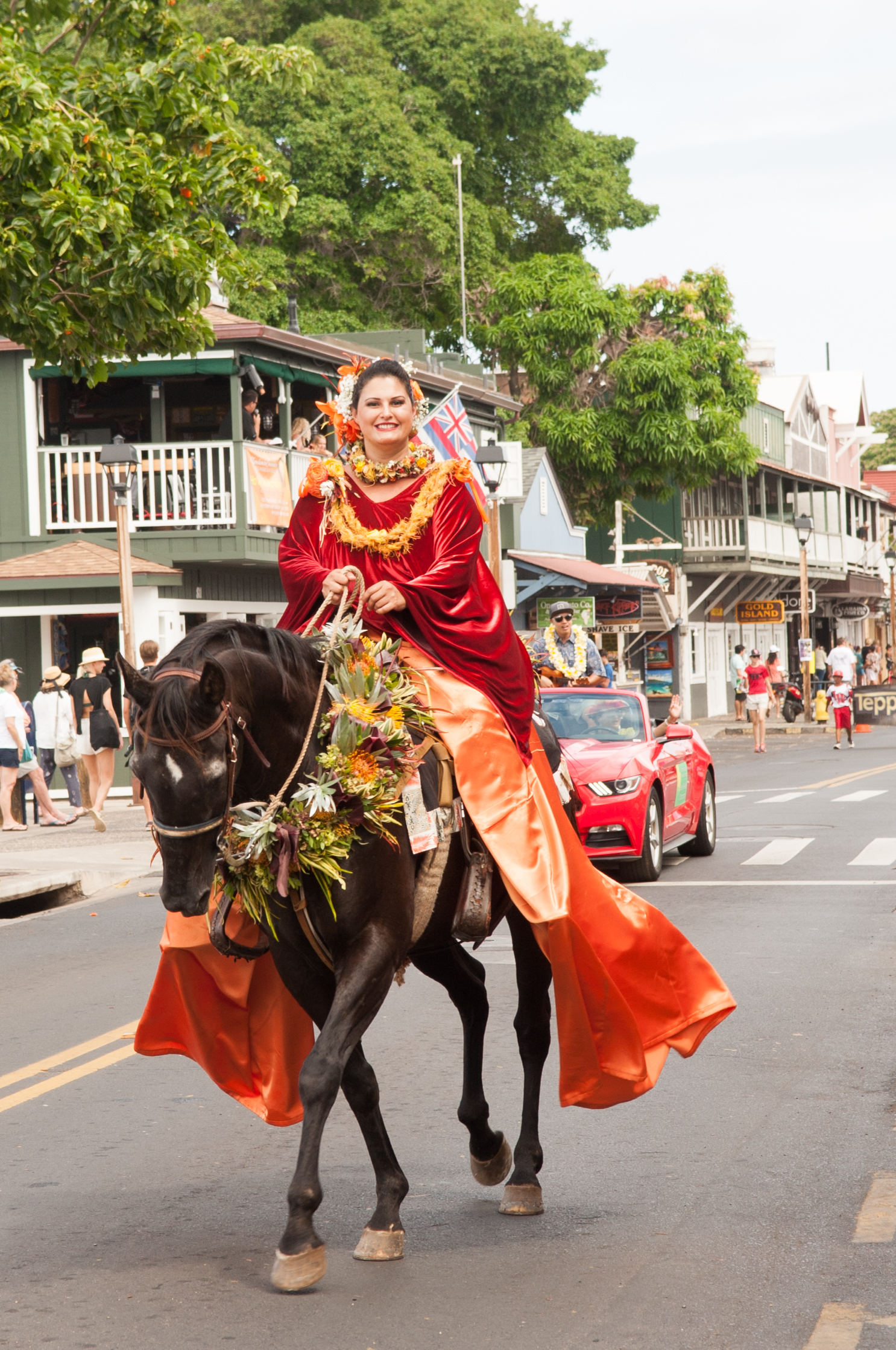2018 Nā Kamehameha Commemorative Pā‘ū Parade and Ho‘olaule‘a
2018 Nā Kamehameha Commemorative Pāʻū Parade & Ho‘olaule‘a
Saturday, June 16-17, 2018
Parade – Front St./ Hoʻolauleʻa – Keawaiki
(Lahaina Banyan Tree Park) – Lahaina, Maui
8:30 a.m. Road Closure / 9 a.m. Hoʻolauleʻa / 9:45 a.m. Parade
Spend your Father’s Day weekend in Lahaina celebrating ali’i nui, Kamehameha I and his legacy at the 2018 Nā Kamehameha Commemorative Pāʻū Parade & Ho‘olaule‘a. The 2018 theme is “Ola ke aloha no nā aliʻi – The love for our aliʻi lives on.” In commemoration of the 100th anniversaries of the Hawaiian Civic Club of Honolulu (the father club, founded by Prince Jonah Kūhiō Kalanianaʻole) and Hale O Nā Ali‘i (founded by King David Kalākaua).
On Saturday, June 16 the parade will commence at 9:45 a.m. from Kenui St. along Front St. to Shaw St. There will be five Parade Commentary stations along the parade route at: Longhi‘s, Kimo‘s, Cheeseburger in Paradise, Lahaina Pizza Co. and The Wharf Cinema Center.
Representing all of the islands, the 2018 pāʻū riders are:
Ppāʻū Queen – Tiara Dudoit
Island of Oʻahu – Princess Rachel DeCoite
Island of Niʻihau – Princess Ashely Branco
Island of Maui – Princess Leila Kalani Larson
Island of Hawaiʻi – Princess Chasity Koko
Island of Molokaʻi – Princess Vernell Kai
Island of Kahoʻolawe – Princess Mary Klein
Island of Kauaʻi – Princess Amy Tavares
Island of Lānaʻi – Princess Kristina Duarte
Frank Franklin Crozier of Makawao is the 2018 Pāʻū Marshal.
The ho’olaule’a under the Lahaina Banyan Tree is free and open to the public with exhibits, free keiki activities, a parade and pāʻū awards presentation, food booths supporting community non-profits, Maui made crafters, music and hula. The festivities are scheduled to last until 5 p.m. and continue Sunday June 17 from 9 a.m. to 5 p.m.
Keawaiki (Banyan Tree Park) Highlights:
· 9 a.m. to 5 p.m. – FREE to the public Saturday and Sunday, June 16 and 17
· Hawaiian Music and Hula – by Reiko Fukino, Kaniala Masoe, Sudden Rush, the Lahaina Honolua Senior Citizens and Maui Music Mission. On Sunday Kaui Krueger (2011 Richard Hoʻopiʻi Falsetto Champion), Hālau Keala Kahinano O Puna (celebrating 10 years of hula), Nā Wai ʻEha and Kason Gomes (2017 Richard Hoʻopiʻi Falsetto Champion).
· Pāʻū Awards Ceremony 2 p.m.
· Maui Made Arts & Crafts
· ‘Ono Eats – Delicious Local Favorites to support local non-profits
· Lei Making
· Meet and greet the pāʻū princesses and riders
· Cultural Exhibits
· Keiki Art Activities
ROAD CLOSURE NOTICE:
Front Street will be closed to traffic starting at 8:30 a.m from Kenui Street to Shaw Street.
Planning Co-Chairs for this year’s event are Daryl Fujiwara of Smythe Fujiwara Design, the Lahaina Hawaiian Civic Club and Pāʻū Co-Chair’s Donna Otsuka and Gena Lay Rickard. Melissa Sowers – Poʻo Roving Marshal and Moani Whittle-Wagner Pāʻū Coordinator
Partners for this year’s event include: Hawaiʻi Tourism Authority, County of Maui, Lahaina Hawaiian Civic Club, Smythe Fujiwara Design, KPOA 93.5 FM, Lōkahi Pacific and Lahaina Town Action Committee.
More About Pāʻū:
*Information Courtesy: The Art of Pāʻū
ARTICLE CONTINUES BELOW ADIn 1875, vibrant writer Isabella Bird, wrote with awe about her arrival to the Sandwich Islands. She was curiously impressed with the Hawaiians love of horses, particularly the women.
Every now and then a flower-wreathed Hawaiian woman, in her full radiant garment, sprang on one of these animals astride, and dashed along the road at full gallop, sitting on her horse as square and easy as a hussar. The women seemed perfectly at home in their gay, brass-bossed, high peaked saddles, flying along astride, barefooted, with their orange and scarlet riding dresses streaming on each side beyond their horses tails, a bright kaleidoscopic flash of bright eyes, white teeth, shining hair, garlands of flowers and many-coloured dresses. Sometimes a troop of 20 of these free-and-easy female riders went by at a time, a graceful and exciting spectacle, with a running accompaniment of vociferation and laughter. Many of the women were in flowing riding-dresses of pure white, over which their unbound hair, and wreaths of carmine-tinted flowers fell most picturesquely.
This is one of the best early descriptions of the beautiful tradition of pāʻū riding, carried on today in pageants and parades throughout the state. Yards and yards of brilliant fabric, usually of an islands particular color, go into long skirts and saddle decorations. And, thousands of flower blossoms are strung and woven into lei for horses as well as riders.
But how did such an elaborate custom begin?
From the beginning, Hawaiian people loved horses, and the women had no interest in riding side-saddle, in spite of the missionaries disapproval. The wahine hitched up their long dresses from the back, tucked them in around their legs and rode astride, letting their skirts pāʻū flag out behind as they paraded through town in their finery. If they had to travel any distance, they might wrap a long sheet of muslin around themselves to keep dust and mud off their good clothes. Special occasions of course demanded special costumes and lei, for horse as well as rider.
Like a kind of hula on horseback the pāʻū riding unit grew into an essential element of parades and other festive gatherings. From 1965-1983, Auntie Anna Lindsey Perry-Fiske hosted fully scripted and choreographed Hawaiian history pageants in her Waimea front yard. The Old Hawaiʻi on Horseback celebration was one of the social events of the season, always led by Anna herself as queen for the day, draped in the finest pāʻū fabrics and lei. Her notorious skill and style as a pāʻū rider took her all the way to the Calgary Stampede and the Pasadena Tournament of Roses Parade.
Today you’ll see pāʻū riders during Aloha Festivals and other island parades, with beautiful women wrapped in a rainbow of satiny yardage, draped with fabulous lei on their shoulders and hats, and on their horses necks and hooves. Usually a pāʻū queen leads the procession, dressed in red, followed the islands princesses, ladies in waiting and paniolo outrider adorned in the colors and flowers particular to each island, eight in all.
Red with ʻōhia lehua represents the island of Hawaiʻi; pink with lokelani for Maui, gray or blue with hina hina for Kahoʻolawe; orange with kaunaʻoa for Lānaʻi green with kukui for Molokaʻi, yellow with ʻilima for Oʻahu, , purple with mokihana for Kauaʻi and white or brown with pūpū o Niʻihau for the tiny Island of Niʻihau.
2017 Nā Kamehameha Pā‘ū Parade and Ho‘olaule‘a. PC: Lisa Villiarimo
2017 Nā Kamehameha Pā‘ū Parade and Ho‘olaule‘a. PC: Lisa Villiarimo
2017 Nā Kamehameha Pā‘ū Parade and Ho‘olaule‘a. PC: Lisa Villiarimo
2017 Nā Kamehameha Pā‘ū Parade and Ho‘olaule‘a. PC: Lisa Villiarimo
2017 Nā Kamehameha Pā‘ū Parade and Ho‘olaule‘a. PC: Lisa Villiarimo
2017 Nā Kamehameha Pā‘ū Parade and Ho‘olaule‘a. PC: Lisa Villiarimo
2017 Nā Kamehameha Pā‘ū Parade and Ho‘olaule‘a. PC: Lisa Villiarimo





